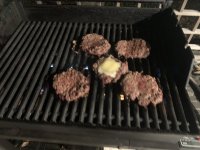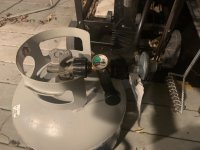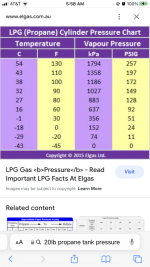John_NJ
TVWBB Wizard
I bought a propane tank fuel gauge at Lowes during the Summer, and tonight when grilling, The gauge was reading almost empty.
I switched to a brand new blue rhino tank, and again the gauge read very low, borderline empty.
The propane tank felt full.
Outside temperature was in the 40’s.
Would colder temperatures cause the tank to have less pressure/ read empty?
I switched to a brand new blue rhino tank, and again the gauge read very low, borderline empty.
The propane tank felt full.
Outside temperature was in the 40’s.
Would colder temperatures cause the tank to have less pressure/ read empty?



